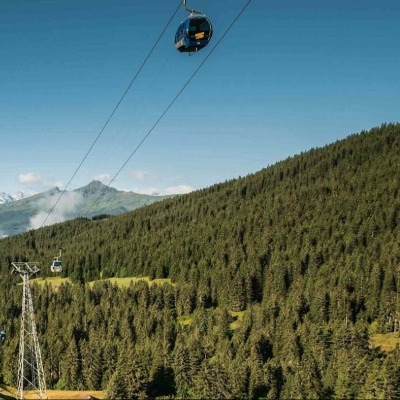Climate Adaptation In Practice: Holiday Destinations In Graubünden Take Action

Climate change is in full swing and is becoming increasingly visible and tangible through various phenomena and changes in everyday life. Mountain tourism is also affected. A new Innotour project is finding ways for destinations in Graubünden to respond proactively to climate change.
Last year, the three Graubünden regions of Lenzerheide, Vorderes Prättigau, and Engadin Samnaun Val Müstair addressed the question of how they can adapt their tourism to a changing climate as successfully as possible and, above all, how they can seize opportunities. Led by Graubünden Tourism, the "Climate-Fit Destinations" project analyzed the climatic and economic situation together with key local stakeholders and external experts. "The resulting regional climate scan provides a sound scientific basis for setting the right course for the future," says Marc Schlüssel, CEO of Lenzerheide Marketing und Support AG.
Wide range of measures
The findings were consolidated into three individual "Climate Fitness Roadmaps." They contain concrete suggestions for adapting to climate change in the destinations. New, less snow-dependent winter offerings or the use of the "mountain freshness" trump card for times when temperatures in low-lying areas and cities are becoming increasingly hot and unbearable are obvious.
However, climate adaptation also requires preparation for increasingly frequent natural events such as rockfalls or mudslides, and the resulting disruption to vacation experiences. This includes both live status information on the trail infrastructure in summer and well-established crisis management processes so that, in the event of a major event, damage to tourism can be limited as much as possible. This broad range of measures is complemented, for example, by overarching coordination of activities or the establishment of an integrated water management system to avoid water use conflicts.
Tourism interests included
The roadmaps were presented to tourism and political leaders in Lenzerheide and Prättigau in March 2025, with Engadin Samnaun Val Müstair following in the spring. "There is broad public consensus that climate protection measures are unavoidable. However, this awareness is only slowly growing that we must also adapt to the changing climate," says Georg Fromm, regional developer for the Prättigau/Davos region, emphasizing the importance of the process.
Martina Hollenstein, Head of Sustainability at Graubünden Ferien, emphasizes that climate adaptation is only possible through teamwork and cannot be achieved overnight: "In order to successfully prepare for the future, everyone is needed: municipalities, tourism organizations, businesses, and other stakeholders, such as those from agriculture, forestry, or spatial planning. A unified and coordinated approach, as well as long-term visions and plans, is needed."
Develop in parallel
Graubünden is taking a pioneering role among Swiss Alpine destinations. "With this project, we are proactively preparing for new realities in alpine tourism. The goal is to continue proven practices for as long as possible and in a sensible way, while simultaneously developing new offerings that will ensure the long-term tourist attractiveness of our holiday canton," says Martin Vincenz, CEO of Graubünden Holidays, assessing the project. "With forward-looking climate adaptation, the destinations and their companies secure their business success and long-term positioning, minimize risks, and avoid significant costs."
After developing the roadmaps, the project team will oversee the initial implementations over the next two years to help destinations begin their long-term adaptation process. The insights gained in the Innotour project can also be applied to other destinations that want to become climate-ready for the future.
https://www.graubuenden.ch/de/innotour-projekt-modellregion-graubuenden













